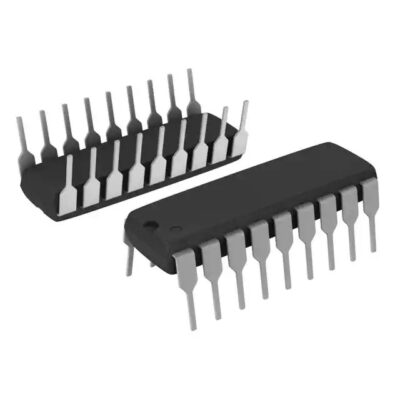LM3915N-1
Part Number: LM3915N-1
Manufacturer: Texas Instruments
Description: IC DRVR DOT/BAR DISPLAY 18DIP
Shipped from: Shenzhen/HK Warehouse
Stock Available: Check with us
ICRFQ.com - Electronic Components Distributor in China Since 2003

Part Number: LM3915N-1
Manufacturer: Texas Instruments
Description: IC DRVR DOT/BAR DISPLAY 18DIP
Shipped from: Shenzhen/HK Warehouse
Stock Available: Check with us
| Datasheet | |
|---|---|
| Category | Integrated Circuits (ICs) |
| Family | PMIC – Display Drivers |
| Manufacturer | Texas Instruments |
| Series | – |
| Packaging | Tube |
| Part Status | Last Time Buy |
| Display Type | LED, LCD, Vacuum Fluorescent (VF) |
| Configuration | Dot/Bar Display |
| Interface | – |
| Digits or Characters | 10 Steps |
| Current – Supply | 6.1mA |
| Voltage – Supply | 3 V ~ 25 V |
| Operating Temperature | 0°C ~ 70°C |
| Mounting Type | Through Hole |
| Package / Case | 18-DIP (0.300″, 7.62mm) |
| Supplier Device Package | 18-DIP |
The LM3915N-1 is a very flexible single-chip integrated circuit that was made to measure analogue voltage levels and power different kinds of screens, such as LEDs, LCDs, and vacuum fluorescent displays. This powerful IC has an analogue display with a logarithmic 3 dB/step scale, which makes it easy to see how voltage levels change. It also has the special ability to switch between a bar graph display mode and a moving dot display mode. In this guide, we’ll talk about how the LM3915N-1 works, what it can be used for, and how it works. This will give you a full idea of this great analogue display driver.
The LM3915N-1 is an important part of many electronic systems that need to watch analogue voltage and show it visually. This integrated circuit has a lot of features and functions that make it a good choice for many different uses. In this guide, we’ll talk about the LM3915N-1’s different features and how they can help your projects.
The LM3915N-1 works because it has a complex circuitry inside that can correctly measure analogue voltage levels and show them on a screen. In this part, we’ll give you a high-level look at how the LM3915N-1 works on the inside. We’ll talk about how it senses voltage and the benefits of its logarithmic 3 dB/step analogue display.
By using the voltage sensing mechanism and the logarithmic 3 dB/step analogue display, the LM3915N-1 shows analogue voltage levels on the connected display in a way that is clear and easy to understand. This makes it easy for users to keep track of and understand the voltage information.
Note: The LM3915N-1’s detailed internal circuitry may contain technicalities that are hard to understand. For a deeper understanding, it is best to look at the datasheet and any other tools that the manufacturer provides.
For the LM3915N-1 to work well and connect to a monitor (LED, LCD, or vacuum fluorescent), it needs certain external parts. A power source, a voltage reference, resistors, and capacitors are all examples of these. The voltage range should be right for the power source. In the voltage divider network, the resistors are used to set the voltage levels for each section. For decoupling and steadiness, you need capacitors.
For LED screens, connect each of the LM3915N-1’s output pins to a separate LED using current-limiting resistors. LCD screens need an extra driver circuit, and the links depend on the type of driver circuit. LEDs and vacuum fluorescent displays both work by connecting the anodes of the display pieces to the outputs of an LM3915N-1.
Check the LM3915N-1 documentation for suggestions on which parts to choose. Choose the numbers of the resistors based on the voltage range and resolution you want. The capacitance and voltage values of capacitors should be right.
By following these rules and making the right connections, you can make sure that the LM3915N-1 and the chosen display type work well together.
The LM3915N-1 is often used in many different ways. Here are some examples:
In these situations, the LM3915N-1 has reliable voltage sensing, a logarithmic display, and different ways to show the voltage. It is easy to use and shows voltage accurately, making it a great choice for tracking and displaying analogue voltage.
The LM3915N-1 is a great analogue display driver because it can switch and show a logarithmic 3 dB/step display. It can accurately measure voltage and work with different kinds of displays, making it a very flexible tool. The LM3915N-1 is a trusted tool for analogue voltage display needs. It can be used in audio systems, battery monitors, RF communication, and visualizers, among other things.
We suggest getting in touch with our experts at ICRFQ to learn more about the LM3915N-1 and get personalised advice. They will help you get the most out of the LM3915N-1 and help you get the best results for your particular purpose.
WhatsApp us